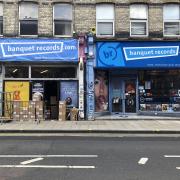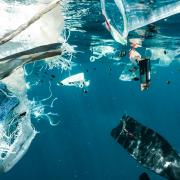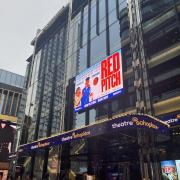
Fast Fashion
An Introduction to Fast Fashion
By definition, fast fashion is a term retailers use to describe affordable designs that move quickly from the catwalk to stores to meet new trends. Essentially, it’s producing trendy clothes that are fast, inexpensive, and disposable to a rapidly changing consumer market. It has allowed brands like Zara, Fashion Nova, New Look and H&M to sell trends at record speed.
For example, companies like Zara and Fashion Nova have established and honed the fast fashion business model. Generally, legacy brands release a massive quantity of clothes in a few seasonal releases. They spend months designing lines, buying and treating fabric, manufacturing in bulk, and distributing. Zara uses two techniques: quick response manufacturing and dynamic assortment. 'Quick response manufacturing' is a strategy used for reducing lead-times across all functions of an organisation. Another strategy used by fast fashion brands is a 'dynamic assortment', which is the process of constantly pumping out new products to see what sells.
It’s not uncommon for fast-fashion retailers to launch new products several times in one week to stay relevant, which is why fast fashion has been the only sector of the fashion industry that has grown for the past 15 years. It’s a business model that has transformed the industry, but it also means that we are drowning in clothes.
The Impact of Fast Fashion
Because fast fashion brands are hunting for new trends, many times, they copy and steal ideas from independent artists. Companies often resort to advertising to stay relevant and promote their products globally. Moreover, they use cheap labour sourced from sweatshops, where people work at inhumanely low waged for long hours and unethical working conditions. In Bangladesh, workers earn around 25 pounds per month. Since 1990, more than 400 workers have died and several thousand more have suffered because workers are forced to work at 14-16 hours a day in hazardous conditions, often exposed to harmful and carcinogenic chemicals. Female workers face sexual harassment and no access to maternity leave. Factory management prohibits the formation of trade unions which prevents workers from defending their rights.
Because fast fashion is so cheap and disposable, consumers are throwing their clothes away at an alarming rate. Moreover, the textile industry emits more greenhouse gas emissions than international shipping and aviation combined, and some reports even claim that it’s the second dirtiest industry in the world.
Cheap textiles also increase fast fashions impact. Polyester is one of the most popular fabrics. It's obtained from fossil fuels, adding to the global warming crisis, and can shed microfibres that add to the increasing levels of plastic in our oceans when put in the wash. But even natural fabrics can be a problem at the scale fast fashion demands. Conventional cotton requires enormous quantities of water and pesticides in developing countries. Resulting in risks of drought and creates stress on water basins, as well as competition for resources between companies and local communities.
Many textiles are synthetic fibres and make up 60% of our clothing, are made of micro-plastic, but they are non-recyclable. Synthetic fabrics include Spandex, Acrylic, Rayon, Polyester, and most Nylon. These contribute to ocean plastic pollution. Animals are also impacted by fast fashion, by the toxic dyes that are released. Numerous scandals reveal that real fur, including cat and dog fur, is often being passed off as faux fur to unknowing shoppers. The truth is that there is so much real fur being produced under terrible conditions in fur farms, that it’s become cheaper to produce and buy than faux fur!
Although the fashion industry is responsible for committing many crimes towards humans and the environment, it's miles maximum obtrusive in terms of speedy style. Slow fashion is a step closer to aware manufacturing, honest hard work rights, herbal materials, and lasting garments. Conscious style way there are brands, communities, and those who are preventing for the protection of our earth and fellow humans. Buying a garment from an accountable brand guarantees you have business enterprise over your private style, are becoming a fine product, and are protective people those who need it the most.



























